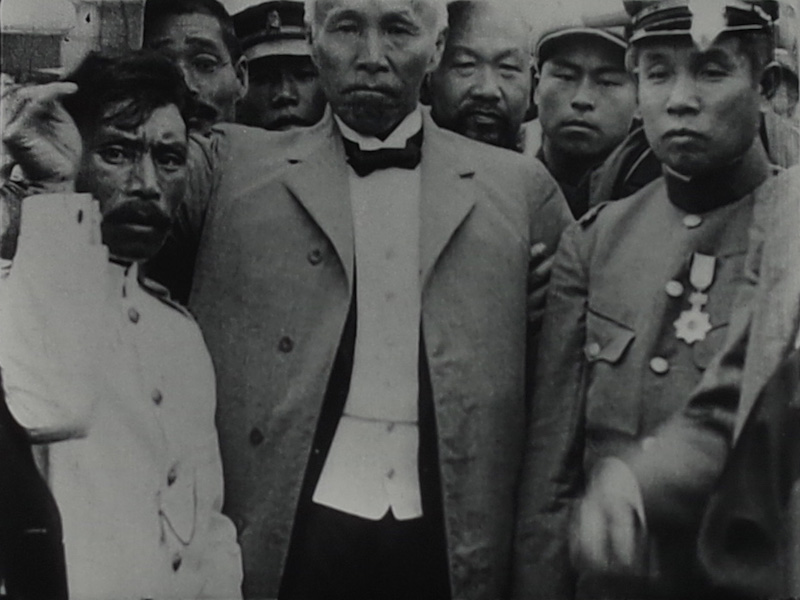NIHON NANKYOKU TANKEN
[The Japanese Expedition to Antarctica]
? (JP 1910-1912, 1930)
A tinted and toned 35mm nitrate positive of the film was handed down through four generations of the family of Shunzo Murakami (1872–1924), the founder of the Seiko Zasshisha (Success Magazine Company). Drawing inspiration from Samuel Smiles’ book Self-Help (1859), Murakami published magazines like Success (1902-1916) and World of Expedition (1906-1912), which aimed to cultivate a spirit of adventure and getting ahead in the world among Japanese youth of the post-Meiji Restoration era. As it happens, he was also appointed permanent secretary of the campaign club of Lieutenant Nobu Shirase’s Antarctic expedition (1910-1912).
In order to clarify the numerous mysteries surrounding the film, the National Film Archive of Japan conducted a thorough investigation, which revealed that the original documentary footage, initially screened in 1912 with live commentary from Lieutenant Shirase, was re-edited and re-released with added expository intertitles in 1930, on the 20th anniversary of the expedition. By that time Murakami had passed away, and the film arguably ended up over-emphasizing the contribution of campaign club leader Shigenobu Okuma (1838–1922) – the eminent politician who played a formative role in modernizing Japan – at his expense.
The Japanese Expedition to Antarctica was released again in 1940, with political implications. This time the film was advertised as “celebrating the 30th anniversary of claiming Antarctica”, but in the intervening ten years some of the material had been lost, and the film was cut together from four incomplete positives, which incidentally all used different film stock (Gevaert Belgium, Kodak, Agfa, and Ferrania).
In 2011 the film was screened at the Pordenone Silent Film Festival in its section “The Race to the Pole”, from a newly struck print of a digest version. This 19-minute digest version was prepared on the 40th anniversary of the expedition for a memorial event held by the surviving members of the team to comfort the spirits of the dead. By the 1950s most of the survivors were no longer willing to sit through a feature-length silent film, so the material was trimmed substantially.
Over the years the film has thus been re-edited and re-purposed at ten-year intervals, with each subsequent anniversary. The Japanese Expedition to Antarctica screened at this year’s Giornate constitutes the longest version of the film available today. The main source material for the new DCP is a partially tinted and toned 35mm nitrate positive owned by Masatoshi Murakami. Put together with the help of the original intertitle censorship documents, it re-creates the form of the film as it was seen on its “first” release in 1930. The send-off party at Okuma’s residence, which was largely omitted from later versions, and several scenes that only survive as part of the digest version have finally been edited back into the film, allowing the entirety of The Japanese Expedition to Antarctica to come to life again.
Masaki Daibo


regia/dir: ?.
photog: Yasunao Taizumi, asst. Chikasaburo Watanabe, + operatori dell’agenzia pubblicitaria/cameramen of the advertising agency Hiromeya.
prod: M. Pathé Shokai.
riprese/filmed: 1910-1912.
copia/copy: DCP, 50′ (demo restauro iniziale incluso/includes restoration demo at the beginning) (da/from 35mm, 16 fps, nitr. pos. in parte imbibito e virato/partially tinted & toned); did./titles: JPN, subt. ENG.
fonte/source: National Film Archive of Japan, Tokyo.
Restauro digitale/Digital restoration, 2019.




